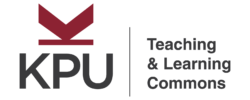What is it?
Concept inventories can be used as a pre-test, to assess prior student knowledge, and as a post-test, to measure learning in a course. They are typically research-based, multiple-choice assessments which have been developed in fields such as physics and astronomy, biology, chemistry, and mathematics.
What are the benefits?
When used as pre-tests, concept inventories can highlight gaps in student knowledge. When combined with a post-test, they can be used to measure student learning.
What are the challenges?
For the most accurate snapshot of learners’ abilities, this should be done in a supervised environment, probably in-person. This will take time, and may cause anxiety in some students.
Instructors should also explain how students should interpret and take action based on their results.
Resources
Concept inventories, organized by subject:
Biology
- Statistical Reasoning in Biology Concept Inventory
- Biological Concepts Instrument
- Microbiology Concept Inventory
Chemistry
Mathematics
- Statistical Reasoning Assessment
- Precalculus Concept Assessment – can be accessed by emailing the paper’s corresponding author, Marilyn Carson
Physics and Astronomy
- Force Concept Inventory – for introductory physics students; covers topics related to the Newtonian idea of force
- Star Properties Concept Inventory
References
Madsen, A., McKagan, S. B., & Sayre, E. C. (2017). Best practices for administering concept inventories. Ithaca: Cornell University Library, arXiv.org. KPU Library Permalink.

